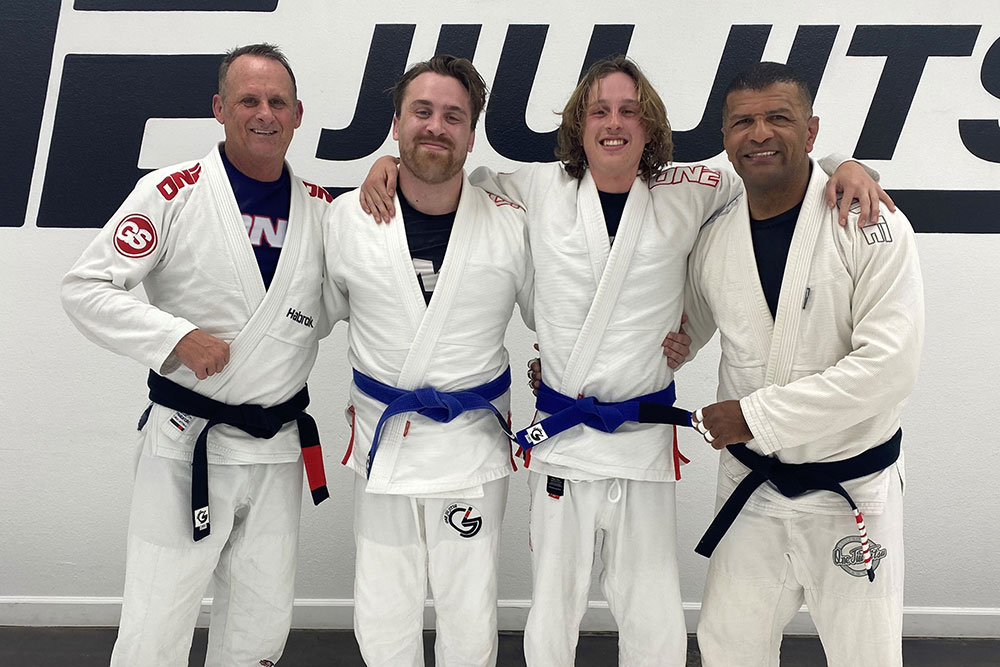Despite being active and fit, Evan Knapp suffered a massive heart attack with a 12% survival rate. He defied the odds with three critical decisions that led to his lifesaving treatment at Hoag.
Twenty-seven is Evan Knapp’s lucky number. Knapp, 63, is the kind of guy who can rattle off a lot of heart-related numbers—BPM, EKG, VO2 max, and the like. A black belt in jujitsu, he skied competitively in college, played rugby, and boxed for many years. He’s a poster child for midlife health and fitness.
That’s why Knapp didn’t worry too much when something felt off after a strenuous jiu jitsu session in October 2024. According to his Apple watch, his heart rate had peaked at a typical 153, but it didn’t rebound as usual. “I felt super disoriented,” said Knapp, who considered driving straight to Hoag but instead drove home to Laguna Beach. His wife immediately wanted to call an ambulance, yet the father of two adult sons, with a grandchild on the way, said he initially declined due to “selfish ego;” he didn’t want neighbors to see him loaded onto a gurney. When crushing chest pain set in moments later, she insisted. “I would have waited five minutes,” Knapp said, acknowledging that every minute matters after a heart attack. “In those five minutes, I could have died.”
Paramedics quickly arrived and asked Knapp where he wanted to go. There was only one answer: Hoag.
Knapp entered the doors of Hoag’s emergency room at 4:55 PM and the cardiac catheterization lab just four minutes later. Cardiologist Babak Pezeshki, MD, found his left anterior descending artery completely blocked—a condition dubbed “the widowmaker” due to its 12% survival rate. Just 27 minutes later, Dr. Pezeshki had successfully implanted a stent, defying Knapp’s long odds for survival. His life saved, Knapp was able to watch the ultrasound of his heart on a monitor.
“I’m like, wow, that doesn’t look right. It’s gray and kind of emaciated,” Knapp said. “And then this wire comes in, a little black line works its way down the artery and hits the top of the heart midway through. It just goes boom, and immediately blood flew to my heart like you pulled a dam.”
“Watching that process was somewhere between watching a beautiful ballet and a catastrophic event at the exact same time,” Knapp said. That ballet was well-choreographed, thanks in large part to philanthropic support for the world-class professionals and facilities at Hoag’s Jeffrey M. Carlton Heart & Vascular Institute.
“The care was amazing,” Knapp said of his three days at Hoag, after which he learned he had no residual heart damage. He attributes that outcome to his fitness coupled with the 27 minutes of swift and skillful care he received in Hoag’s cardiac catheterization lab. A few more minutes could have tallied the difference between life and death—another husband, father, grandfather lost to statistics.
Knapp’s 27 minutes of life-saving treatment were preceded by three wise choices that he now feels responsible to share with others:
1. Monitor your heart with a wearable device.
2. If something seems off, set aside ego and get help. In case you can’t make that decision for yourself, have loving people by your side who can decide for you.
3. Go to Hoag.

Evan Knapp (far left) with sons Ryley and Miles, and jiu jitsu Professor Giva Santana.
“I always loved Hoag, but health care was just a necessary way for me to make sure that I was athletic,” Knapp said. That was before his massive heart attack. “You have an instance like this, and you just realize how good Hoag is.”
What Knapp experienced was Hoag’s signature “privademic” care. With generous philanthropic support from the community, the Jeffrey M. Carlton Heart & Vascular Institute combines the nimble approach and personal attention of a private hospital with the advanced technological capabilities and clinical research of academic institutions.
“This is mastery at a hospital level,” Knapp said. “I feel if I’d gone to any other hospital, I would have died.”
Sign up for our Newsletter